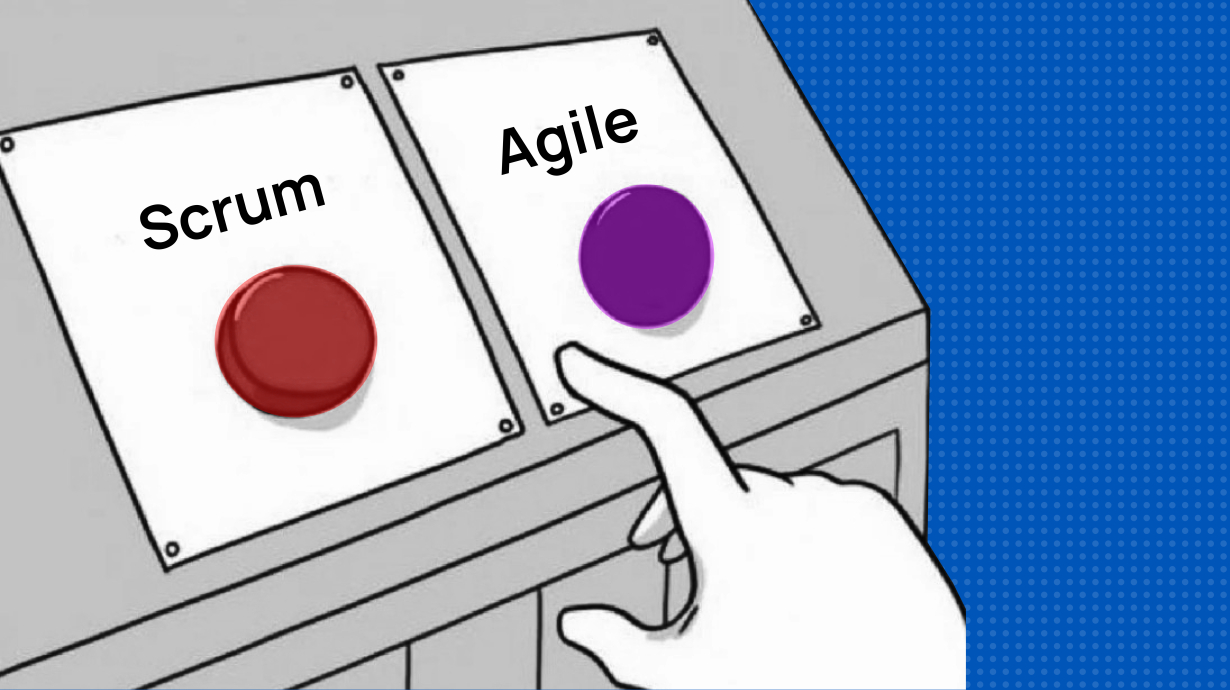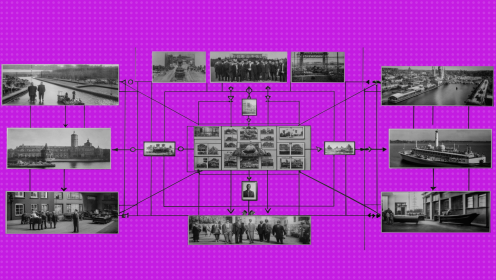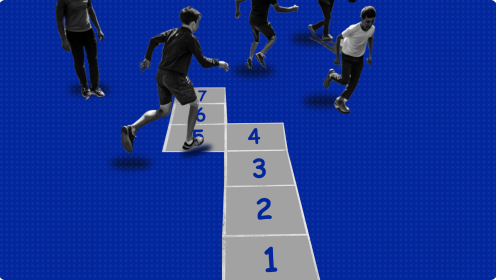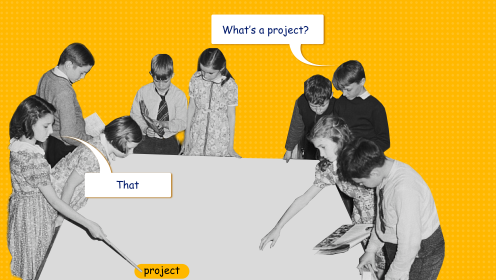If you open almost any article about project management methods, I assure you, you will come across about the same list of “methods”:
- Waterfall,
- Agile,
- Scrum,
- Kanban,
- Lean,
- PRINCE2,
- Six Sigma and others.
The fact is that many authors confuse the warm with the soft, namely, methods with methodologies, techniques, philosophical concepts, and much more. It seems that they just take similar words, hoping that they are synonyms. There is a terrible confusion that makes it very difficult for a novice in project management to understand what is happening.
Important theoretical part
Let's dot the i's.
A method is a way to do something. Also called a technique.
Methodology - a set of methods and principles supported by a theory. Also referred to as a model.
A framework is a ready-made algorithm for applying various methods to achieve a certain goal.
So if you look at the list of "methods" given above through the prism of these definitions, which I tend to consider the most logical and correct, you get the following picture:
| Title | What it is |
|---|---|
| Waterfall | methodology |
| Agile | methodology (and the philosophical concept) |
| Scrum | methodology based on Agile methods |
| Kanban | the Agile method |
| Lean | the Agile method (and also a philosophical concept) |
| PRINCE2 | method |
| Six Sigma | methodology, but it concerns process management, not project management |
By the way, I believe that there are only three project management methodologies:
- cascade (waterfall, Waterfall) – tasks are done sequentially until one is completed, you can't start another;
- flexible (iterative, Agile) - work on tasks is carried out in parallel, so the company saves resources;
- hybrid - respectively, a mixture of the two previous methodologies, which takes only the best elements from them.
They all consist of a variety of methods, which sometimes overlap. But not all methods are related to project management. I'll tell you about the others later, but this isn't about them.
7 project management methods
There are a lot of project management techniques. I have collected, in my opinion, the key ones that work regardless of the project.
Work Breakdown Structure (WBS)
Break down large tasks into smaller and manageable blocks that will be easier for you and the team to understand and do. In short, you perform decomposition.
For example, if you plan to build a Bicycle from scratch, the hierarchical structure of work may look like this:
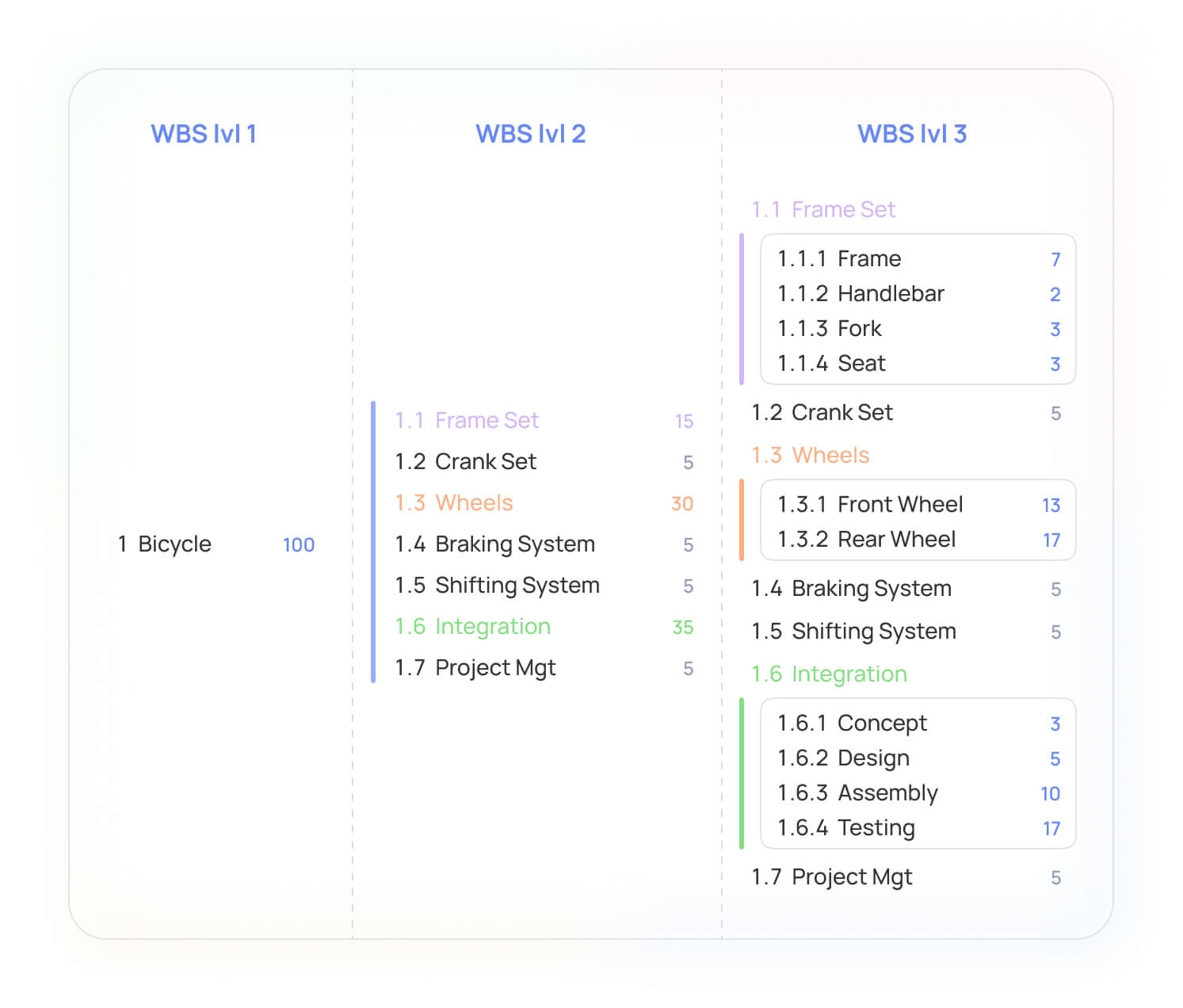
This method will help you evaluate all tasks and understand what resources are needed to achieve the result. Actually, it is best to start decomposition from the opposite - first determine the desired result, and then with the tasks that are needed for this result.
Gantt chart
One of the oldest and most popular project management methods. It is still in demand among both beginners and experienced project managers. All thanks to the excellent visualization of the project - you can see:
- tasks depend on each other;
- the time that each of them takes;
- how this time affects the final deadline.
In principle, you can use the Gantt chart to manage any project, but I would not recommend focusing too much on it. This is a fairly rigid planning option - when faced with reality, any such diagram begins to fall apart, because there are no projects where everything goes smoothly.
A Gantt chart is a great way to evaluate the entire front of work and roughly estimate the duration, sequence, and dependence of tasks on each other. No further.
Kanban
A very popular project management method, part of the Agile and Scrum methodology. It was invented by Toyota to optimize work processes with visual visualization and active work on unfinished tasks.
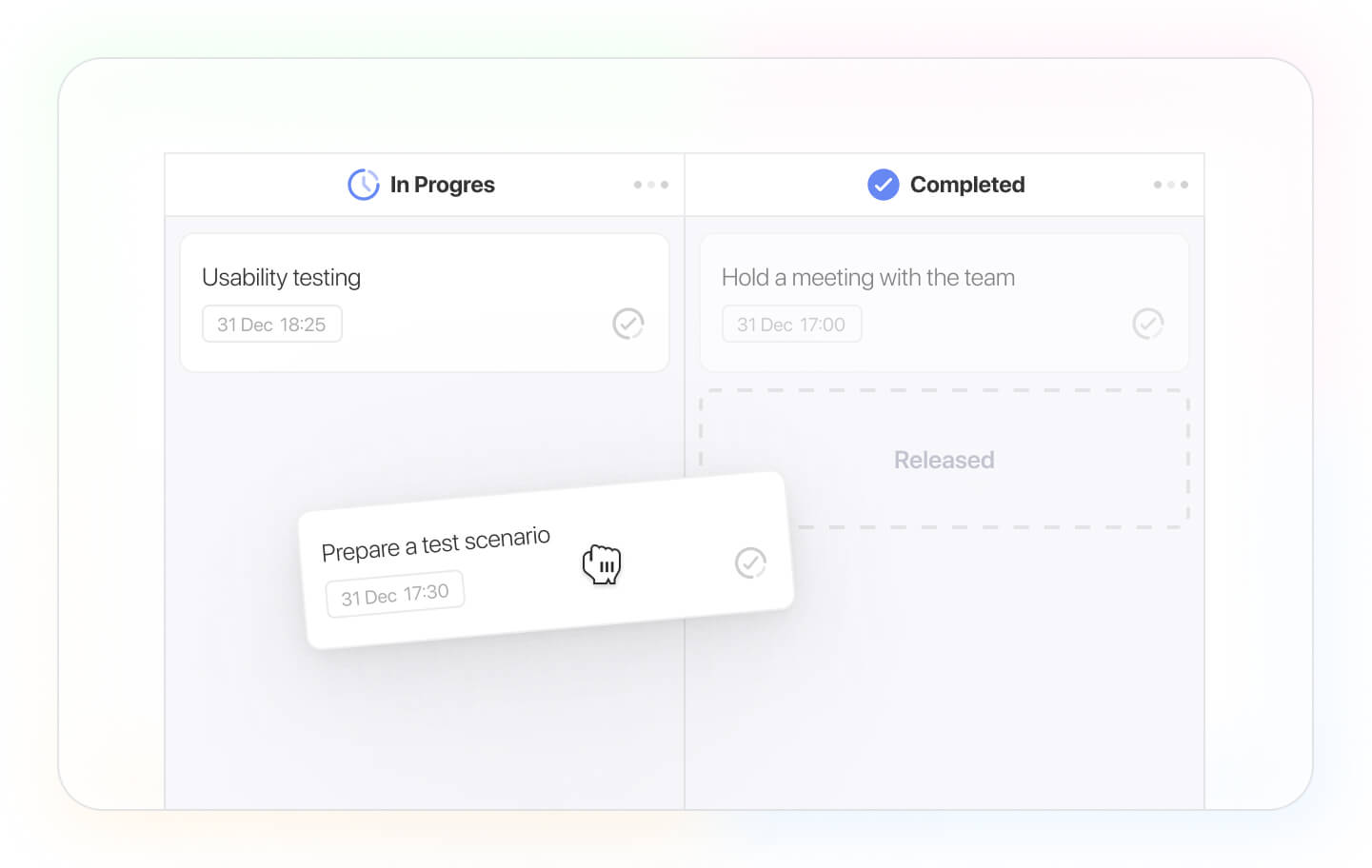
Management is carried out through a special Board and a set of task stickers. The Board is divided into columns-the stages that the task goes through on the way to completion. By default, this is:
- Inbox,
- For work,
- In progress,
- Done.
But you can use columns to describe any workflow. Kanban is especially effective on simple projects or in teams that practice multitasking.
You can use the Kanban method in WEEEK.
PERT (Program Evaluation and Review Technique)
A method for evaluating, analyzing, planning, and controlling project activities. Designed for the us Navy during the Cold war to improve the efficiency of work on new technologies.
PERT is based on special charts and network graphs. Each vertex represents the state of the project at one time or another. Connections between vertexes - design work.
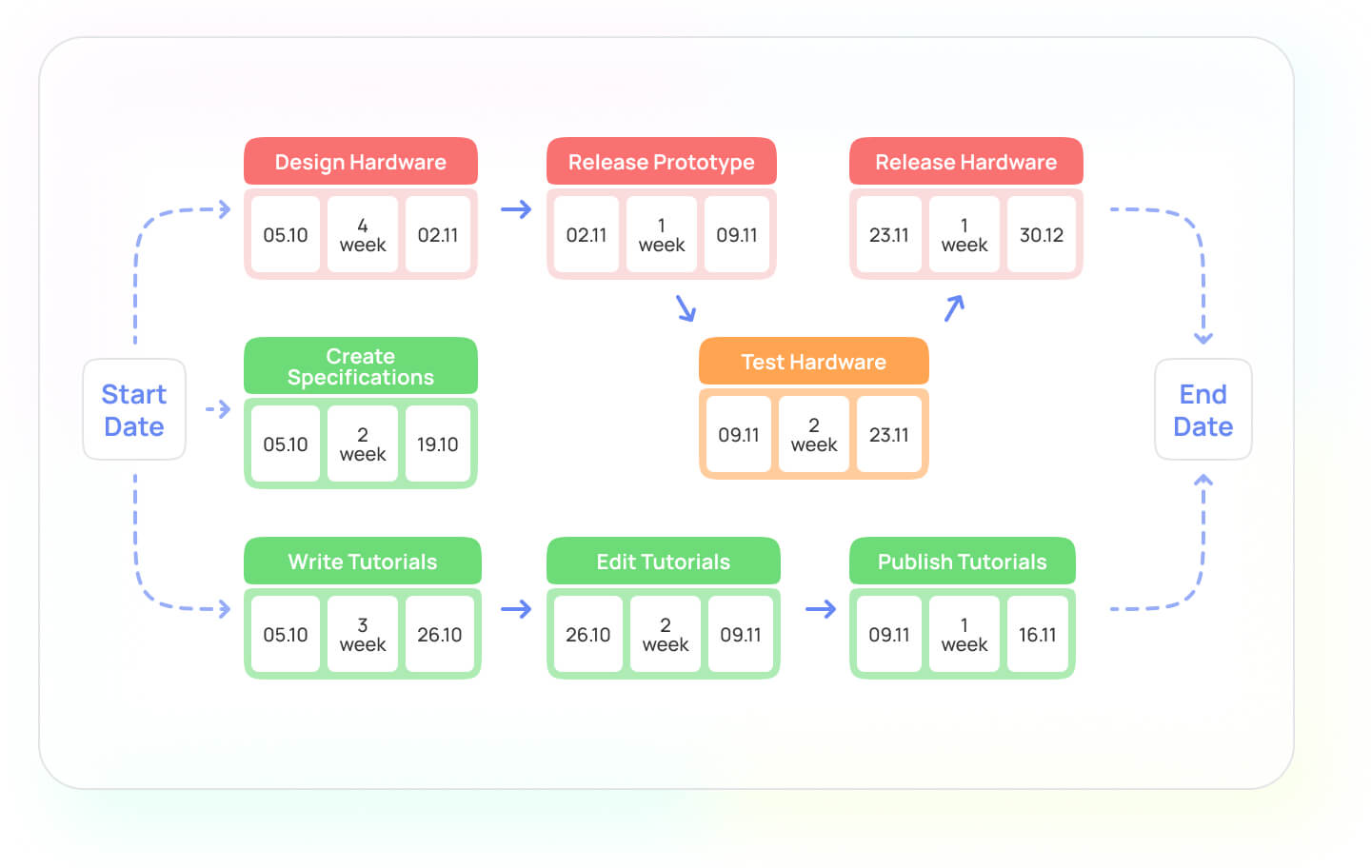
Among other things, PERT allows you to estimate the time that your team will need for each task, as well as the minimum time required to complete the project as a whole.
This method is best suited for large and long-term projects with non-standard tasks and complex requirements.
Critical path method (CPM)
This is a project planning method that is often used in conjunction with PERT. The essence of the method is to determine the longest sequence of interrelated tasks - the so-called "critical path". These tasks are called critical because they do not have a time reserve - that is, any problem in one of these tasks will affect the overall project completion time. Such tasks require more attention and control.
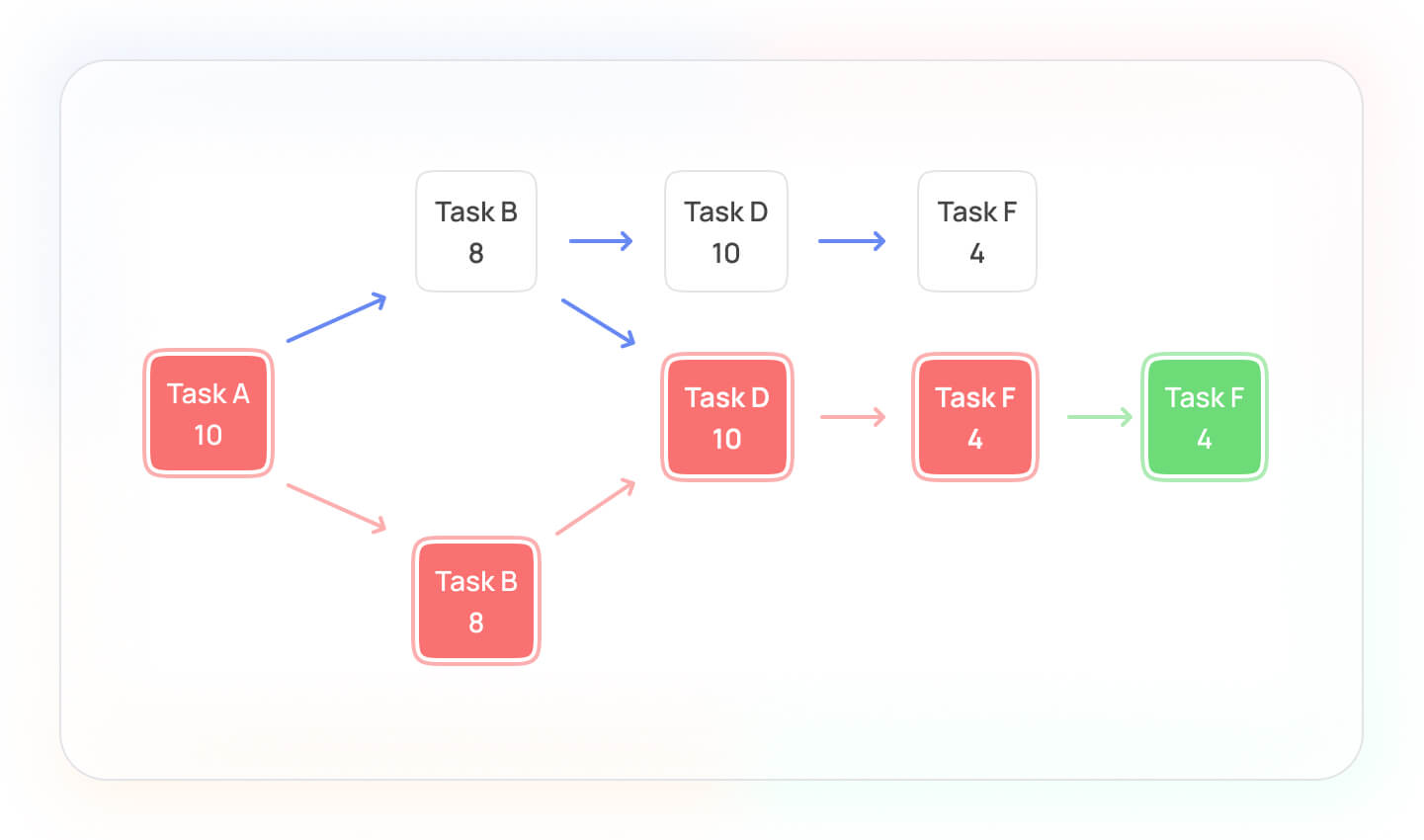
The critical path method is useful for complex projects in areas where deadlines are extremely important - construction, defense, development, etc.
Critical chain project management (CCPM)
A more advanced method based on the PERT and CPM methods and, in a sense, the opposite of them. The critical chain method does not involve strict planning and a strict sequence of tasks. On the contrary, the emphasis is on flexibility in the allocation of resources and attention to the use of time.
CCPM, like the previous two methods, is effective on complex projects. And since the focus of this method is on optimizing time and allocating resources wisely, it is best suited to projects where resources are limited.
Extreme project management (XPM)
A remarkable management method that is radically different from all of the above. If before I talked about methods plus or minus formal, then XPM is not about that at all. XPM is jazz, improvisation. Instead of clear plans, rules, and phases that the project must go through, the focus here is on planning flexibility and the human factor.
In XPM, people play such an important role that they, not numbers, determine the success of a project. For example, if the team has a feeling that the project is moving in the right direction, or they are happy with their life while working on the project, then everything is OK.
The extreme management method is useful for large and complex projects with a lot of uncertain and unpredictable factors.
You can't explicitly recommend certain project management methods. Methods are part of the designer. And your task, as a project manager, is to assemble a system from the details that is suitable for this project, right here and now.








